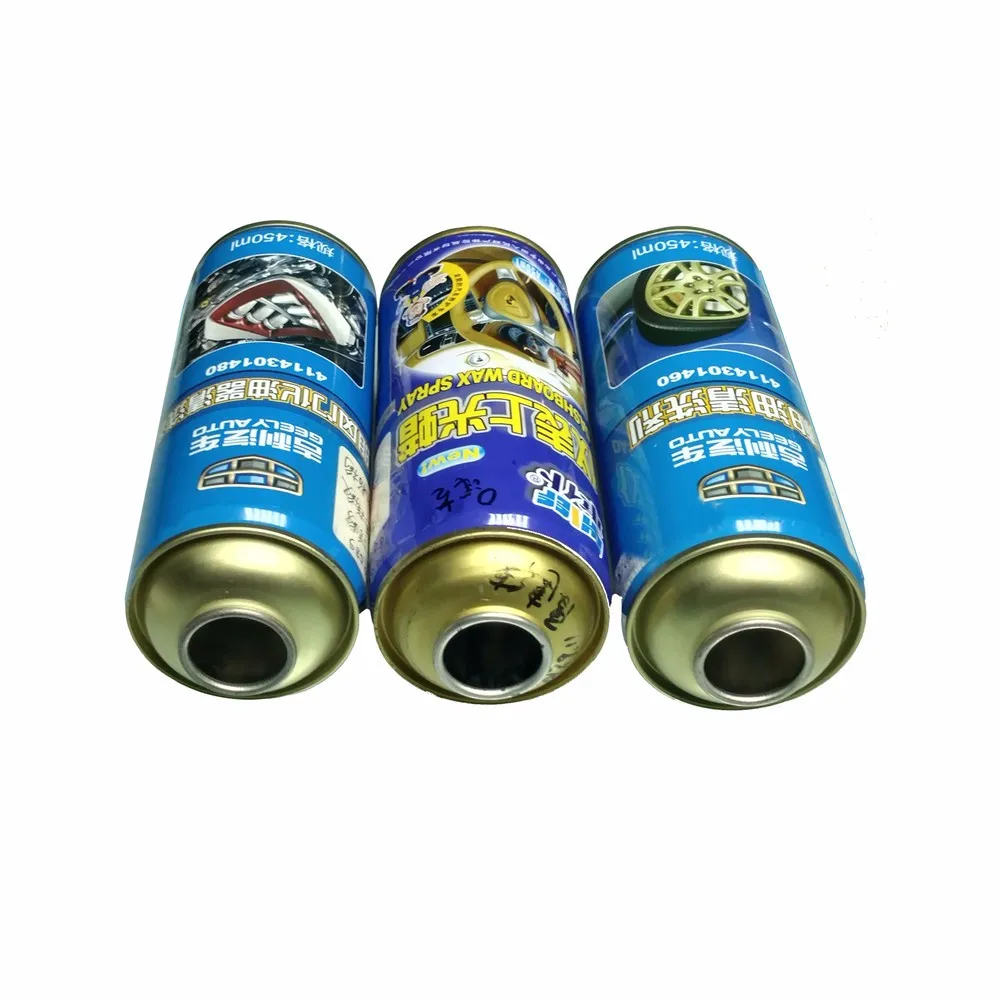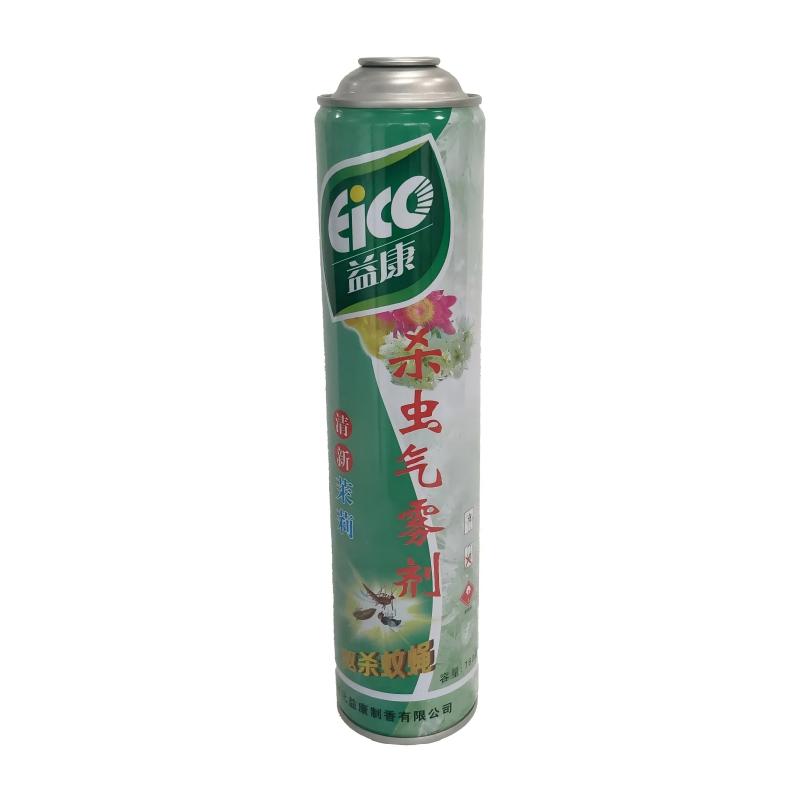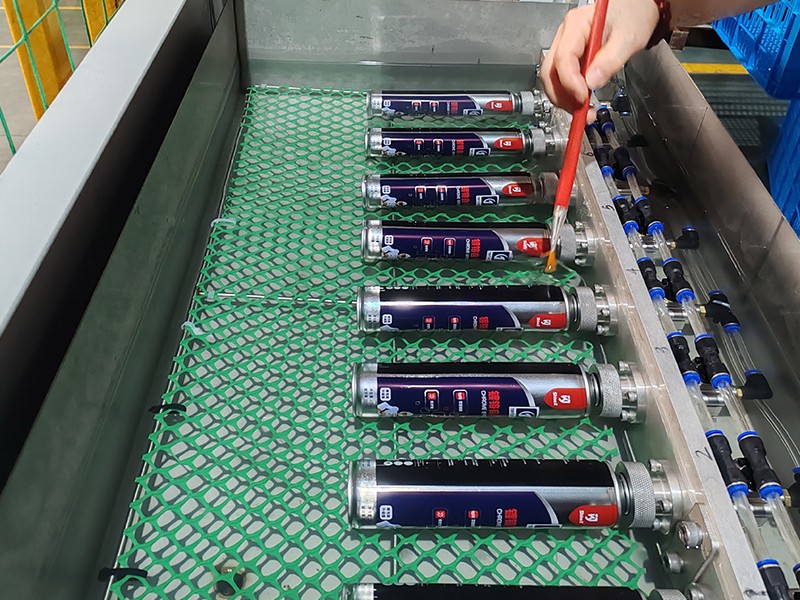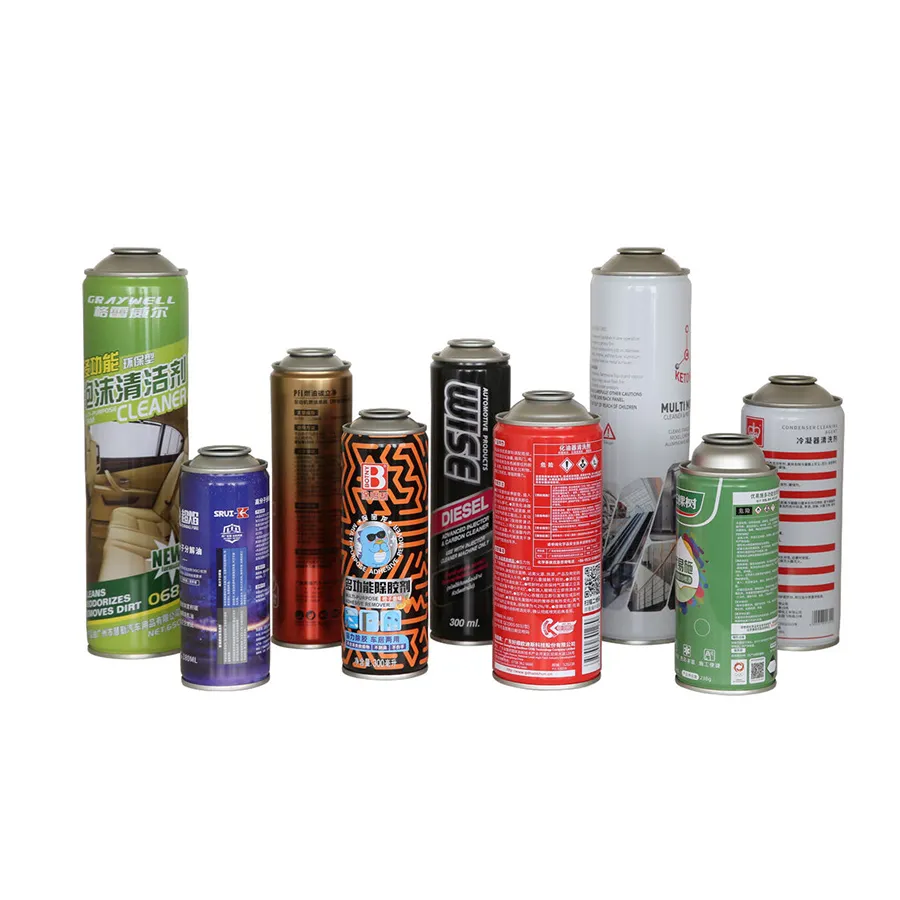In daily life, people are increasingly relying on aerosol tin cans for a variety of uses, from air fresheners to insecticides, hair sprays, paints, etc. Many people may ignore the eye-catching warning signs on the surface of aerosol cans when using them. These signs are not only to remind users how to use the product, but also to protect users and the surrounding environment from potential dangers.
This article will explore the necessity of warning signs on aerosol tin cans, explain the specific meaning of these signs, and help readers understand why improper use of aerosol cans can pose safety hazards.

Why do aerosol cans need warning signs?
Why do the characteristics of aerosol cans require warnings?
Aerosol cans are high-pressure, closed containers filled with compressed or liquefied gas. Because of the high internal pressure, once the can is damaged or encounters extreme temperatures, it is easy to cause an explosion hazard. In particular, gases filled with propellants, such as propane and butane, are highly flammable and easily burn when exposed to fire. Therefore, warning signs are marked on aerosol tin cans to remind consumers that incorrect use of aerosol cans may cause serious physical and chemical hazards.
The can has high pressure, what do users need to know?
The airtightness and internal pressure of the aerosol can directly determine the spraying effect of the product, but it also brings safety hazards to its use. If the aerosol can is placed in a high temperature environment, the pressure inside the can will rise sharply, even reaching the tolerance limit of the can, leading to a burst. In order to avoid this situation, aerosol tin cans are usually marked with words such as "high temperature warning" or "avoid exposure" to prevent users from accidentally exposing the aerosol can to direct sunlight or high temperature environments.

What do the warning signs on aerosol cans mean?
What is the role of the flammability sign?
The propellants used in many aerosol tin cans are flammable gases such as propane and butane, which makes aerosol tin cans extremely flammable. On the surface of the aerosol can, we can see a flame-shaped sign to remind users that the product has a flammable risk. This sign requires users to keep the aerosol can away from open flames or high-temperature objects, especially during use. If the aerosol can leaks near a fire source, the flammable gas in the can will quickly evaporate and burn when it encounters fire, or even explode. This sign is set to remind consumers to pay attention to the flammable characteristics of the can body and ensure safety during use.
What is the importance of the "Do Not Puncture or Incinerate" sign?
Due to the high internal pressure of aerosol cans, directly puncturing or incinerating an empty can may cause an explosion. Therefore, most aerosol tin cans are marked with a "Do Not Puncture or Incinerate" icon to inform users that even if the contents of the can are exhausted, there is still residual high-pressure gas. When handling empty cans, avoid throwing them directly into the fire or puncturing them with sharp tools. Many people may think that empty cans are harmless, but in fact, aerosol tin cans can still be dangerous even when empty under certain pressure.
What are the warnings for high temperature signs and usage environments?
The high temperature warning sign on aerosol cans usually appears in the form of a temperature mark, indicating that users should avoid placing the product in an environment that exceeds a certain temperature. High temperatures may cause the pressure inside the can to increase sharply, and aerosol cans are usually designed to have optimal pressure resistance at normal temperatures. Once the high temperature limit is exceeded, the propellant gas inside the can body may expand rapidly, and the risk of the can body bursting increases accordingly. Therefore, the high temperature sign reminds users to store and use aerosol cans at room temperature to prevent accidents.
Are the chemicals contained in aerosol cans harmful to health?
Why is there an "avoid inhalation" warning?
Many aerosol cans contain chemical solvents or other active ingredients, which form mist-like suspended particles during the spraying process. If inhaled too much, it will irritate the respiratory tract and even cause short-term health problems. Therefore, the aerosol can is marked with an "avoid inhalation" warning to remind users to avoid pointing the spray directly at the face when using it. For aerosol tin cans containing specific chemical ingredients, manufacturers may also add more detailed protective instructions to ensure that users will not feel uncomfortable due to inhalation of harmful substances.
Why are some aerosol cans marked "Use in a well-ventilated area"?
Many aerosol cans, such as paints, pesticides, etc., produce irritating odors or harmful chemicals when sprayed. If used in a confined space, it will lead to the accumulation of harmful gases. To avoid inhaling toxic chemicals, aerosol tin cans are usually marked with the words "Use in a well-ventilated area", requiring users to ensure ventilation when using them to prevent harmful gases from causing harm to the human body.

How to correctly read and follow the warning signs on aerosol tin cans?
What signs should be checked before use?
Before using an aerosol can, it is recommended to carefully read the various signs on the can. Different types of aerosol cans may have different warning signs due to differences in ingredients and usage. Generally, users should pay attention to whether there are signs on the can that indicate high temperature, open flames, and no puncture, and follow the instructions to ensure that the operation complies with safety regulations. In addition, some products such as medicinal or care aerosol cans may also provide special operating instructions. Complying with these requirements will help reduce the risk of misuse.
How to properly store aerosol tin cansto ensure safety?
The storage conditions of aerosol tin cans are directly related to their safety. It is recommended to place aerosol cans in a cool, dry place, avoid direct sunlight, and stay away from fire and heat sources. At the same time, do not place aerosol tin cans in a car or other high-temperature environment at will to prevent the can from exploding due to increased temperature. In addition, proper storage of aerosol cans also includes avoiding collisions and squeezing, as physical damage to the can body can also increase the potential risk of leakage and explosion.

Why do you need to be safe when using aerosol tin cans?
How to avoid misusing aerosol cans?
The use of aerosol tin cans requires special safety awareness, because if misused, it may cause accidental injuries. First, the aerosol can should not be inverted or shaken excessively during the spraying process to avoid uneven spraying of the propellant and contents. Secondly, do not let children touch aerosol tin cans at will, because the contents of many aerosol cans have chemical ingredients, which poses a high risk of misuse to children. It is the basic safety responsibility of users to keep aerosol cans out of the reach of children.
What additional safety measures should be taken when using?
When using aerosol tin cans, always make sure that the spray direction is away from the face, especially to avoid direct spraying into the eyes and skin. In addition, if the aerosol can is used for products with specific purposes such as cooking and spraying, it is recommended to wear protective gloves to avoid direct skin contact with chemical ingredients. When spraying paint aerosol tin cans, a mask should be worn to prevent inhalation of dust and harmful gases. These safety measures are to prevent accidental injuries caused by improper use.
Buy High-Quality Metal Packaging at Affordable Prices
If you're looking to buy metal packaging products that combine quality and affordability, Foshan Dekai Metal Packaging Co., Ltd. offers the best solution. Our factory produces a variety of metal packaging options, including aerosol tin cans, tinplates, and custom-printed products, all crafted with precision and using the latest automation technology. With an annual production output of over 300 million units, we can meet your bulk purchasing needs while maintaining excellent quality.

